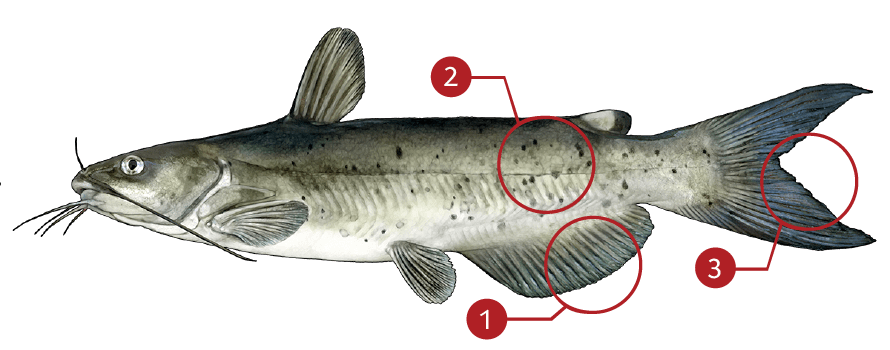CHANNEL CATFISH
How to identify a Channel Catfish
The distinctive Channel catfish can often be recognized at a glance by its deeply forked tail and spots on the body. The only other catfish with forked tails occurring in the U.S. waters are the blue catfish and the white catfish, neither of which is ever spotted. In addition to the spotted specimens, some channel catfish may be entirely black dorsally (males during the spawning season), or dark blue without spots, or even uniformly light blue or silvery exactly like a blue catfish or white catfish.
In the latter cases, the species can be identified by the number of rays in the anal fin. White catfish have 19-23 rays, channel catfish have 24-30, and blue catfish have the longest anal fin with 30-36 rays. Internally, the channel catfish has two chambers in the swim bladder and the blue catfish has three.
Where to catch Channel Catfish
The Channel catfish is currently distributed through most of the U.S. and parts of southern Canada and northern Mexico. In the U.S. it is most abundant in the central part of the country east to the Appalachians. Its occurrence is sparse along the west coast and east of the Appalachians because of its recent introduction.
Channel catfish prefer clean bottoms of sand or gravel in larger lakes and rivers. At spawning time, they will enter and ascend small tributaries and streams.
IDENTIFICATION

| |
24-30 rays on anal fin |
| |
Spots on side with often a greyish-green color but can almost look silver in color and no scales |
| |
Distinct and deeply forked tail |
TARGET AREAS
|
|
Acknowledgements: We thank TAKEMEFISHING.org (www.takemefishing.org), Wisconsin Department of Natural Resources, Indiana Department of Natural Resources for their contributions to these FISH FACTS.

